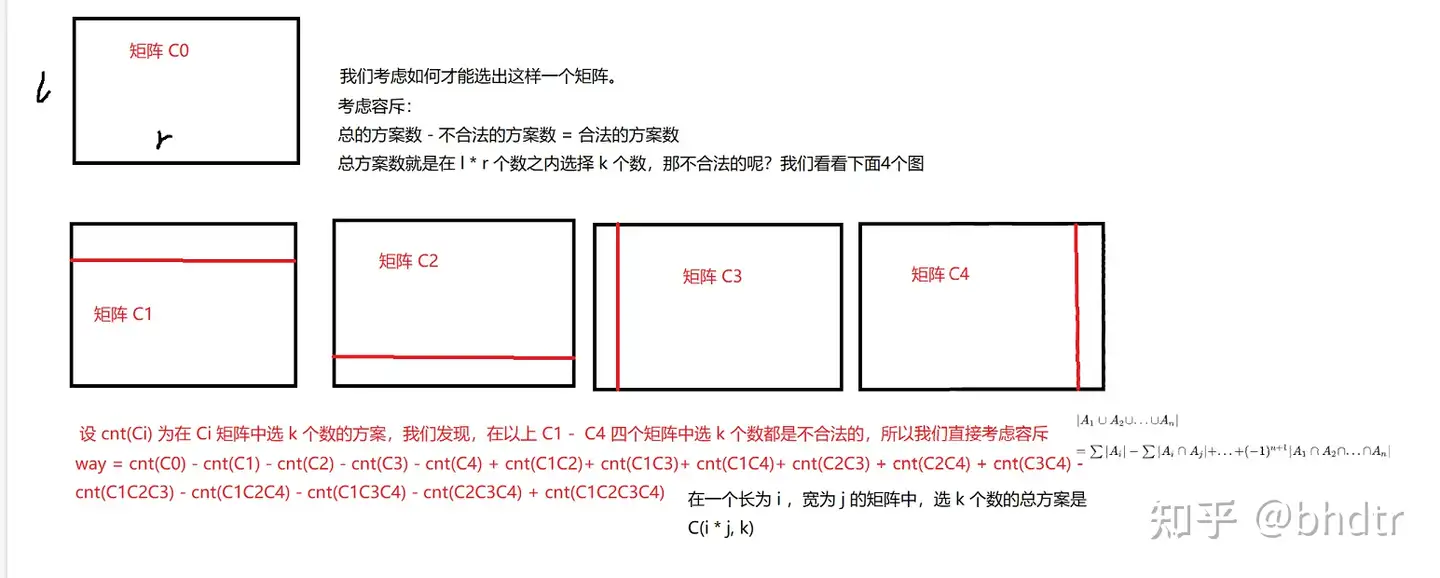AtCoder Beginner Contest 297
1|0A - Double Click
2|0B - chess960
3|0C - PC on the Table
4|0D - Count Subtractions
过程其实不难理解,反复的做减法直到大小关系改变着可以直接用取模来代替。不过要注意出现倍数的情况,此事要少减一次。
5|0E - Kth Takoyaki Set
我的写法其实蛮暴力的,用 set 维护前小,在维护一个由之前的数产生的数的集合,每次选一个最小的加入到前小中。
6|0F - Minimum Bounding Box 2
其实就是枚举一下矩形的大小,然后计算出这么大的矩形的贡献,计算贡献采用的是容斥原理。
荣斥可以参考下面的图片,计算方法可以直接用下面这个式子。
__EOF__

本文作者:PHarr
本文链接:https://www.cnblogs.com/PHarr/p/17307631.html
关于博主:前OIer,SMUer
版权声明:CC BY-NC 4.0
声援博主:如果这篇文章对您有帮助,不妨给我点个赞
本文链接:https://www.cnblogs.com/PHarr/p/17307631.html
关于博主:前OIer,SMUer
版权声明:CC BY-NC 4.0
声援博主:如果这篇文章对您有帮助,不妨给我点个赞




【推荐】国内首个AI IDE,深度理解中文开发场景,立即下载体验Trae
【推荐】编程新体验,更懂你的AI,立即体验豆包MarsCode编程助手
【推荐】抖音旗下AI助手豆包,你的智能百科全书,全免费不限次数
【推荐】轻量又高性能的 SSH 工具 IShell:AI 加持,快人一步
· 全程不用写代码,我用AI程序员写了一个飞机大战
· DeepSeek 开源周回顾「GitHub 热点速览」
· 记一次.NET内存居高不下排查解决与启示
· MongoDB 8.0这个新功能碉堡了,比商业数据库还牛
· .NET10 - 预览版1新功能体验(一)
2022-04-11 第一届 acc 题解